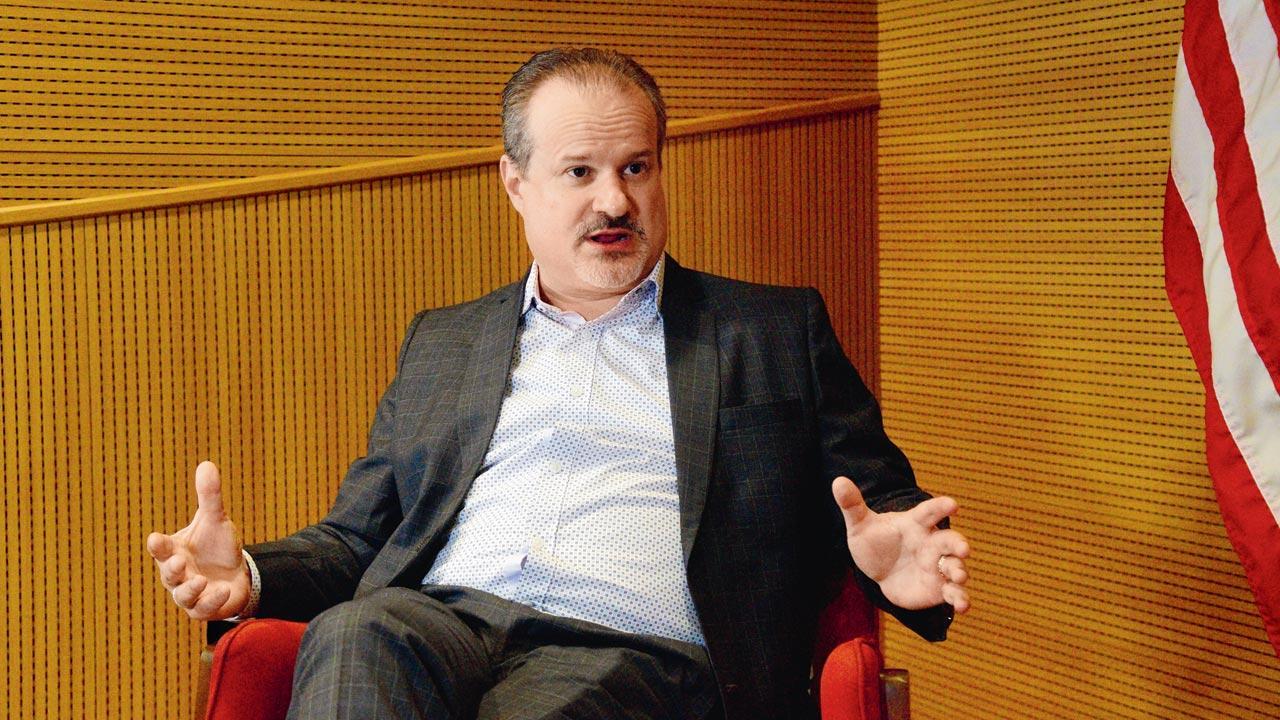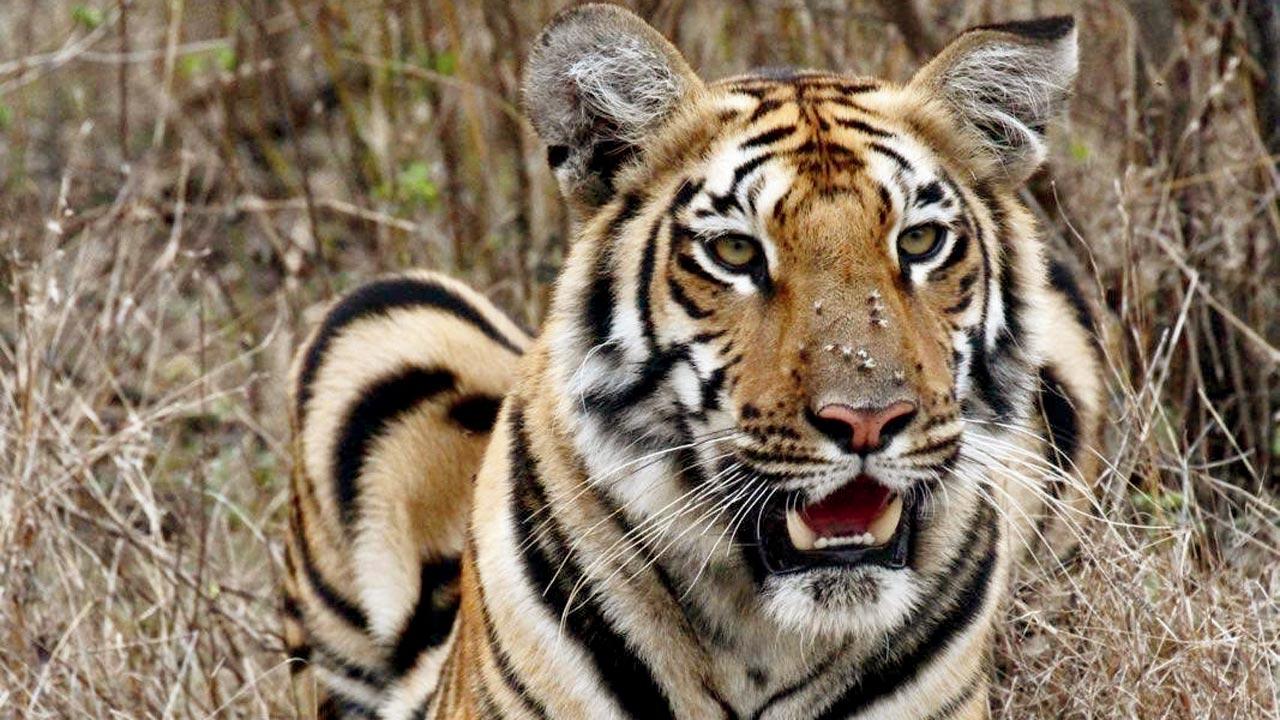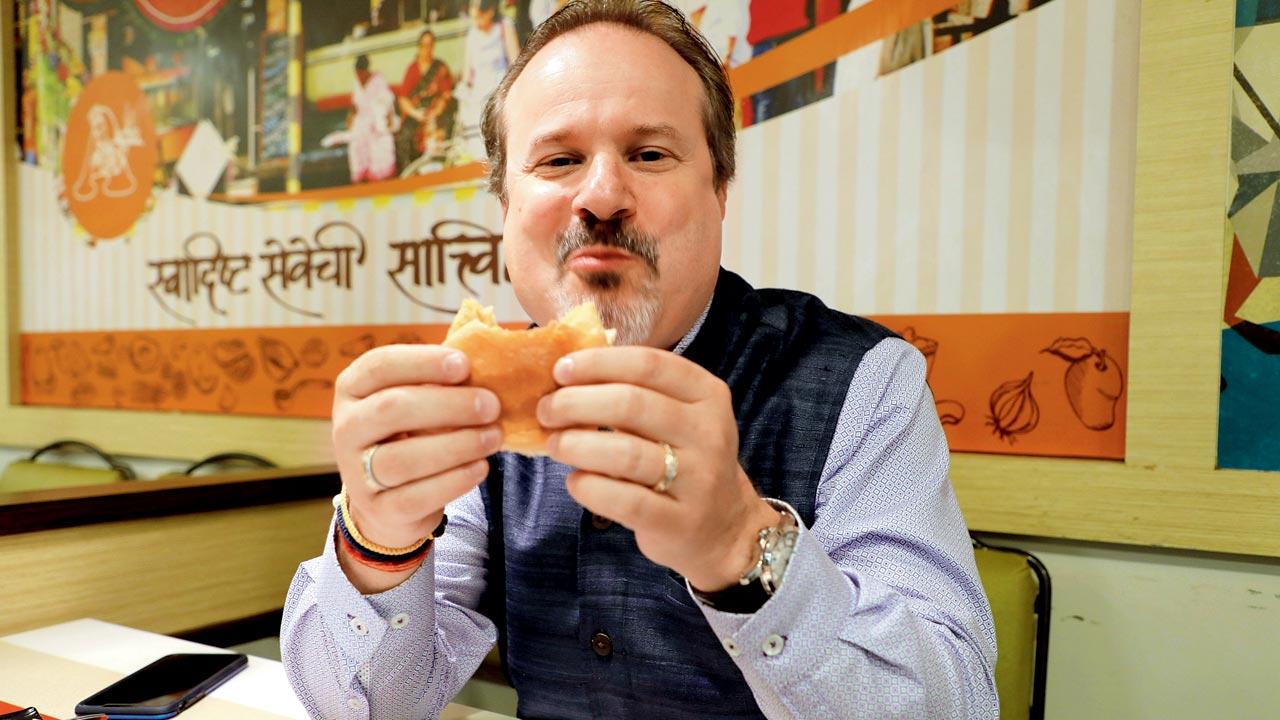The outgoing American Consul General cannot stop talking about India’s forest reserves, food, the importance of inclusivity in business, and Ganesha

Former US Consul General David Ranz has a list of must-see places that will bring him back to India. Pic/Pradeep Dhivar
 Last Thursday, Dadar’s homely Maharashtrian eatery 'Aaswad' had to say a metaphoric goodbye to one of its most enthusiastic gastronomes—former American Consul General David Ranz has returned home to New York, suitcases full of tribal art, Ganesha idols, saffron boxes, photographs taken in wildlife sanctuaries and a hankering for hot vada pav.
Last Thursday, Dadar’s homely Maharashtrian eatery 'Aaswad' had to say a metaphoric goodbye to one of its most enthusiastic gastronomes—former American Consul General David Ranz has returned home to New York, suitcases full of tribal art, Ganesha idols, saffron boxes, photographs taken in wildlife sanctuaries and a hankering for hot vada pav.
ADVERTISEMENT
Of the three years he spent here, two were marked by the pandemic. And yet, so far in just this year, he has been on 12 trips, most including a round of a forest reserve. In charge of the five states of Maharashtra, Gujarat, Goa, Madhya Pradesh, and Chhattisgarh, Ranz tasted as much as possible of the street food, tribal art, and unique business models that integrated the disenfranchised into the local economy.

This photograph of a tigress sitting with her paws crossed in Tipeshwar, Ranz calls “so perfect”. He says it reminds him of his pet cat. “You know that this is a wild animal. You know that this is a dangerous animal, but it’s acting just like my pet cat”
With his next posting in Hawaii, Ranz wraps up his India experience with a chat with Sunday mid-day.
Edited excerpts from the interview.
What are you leaving with from India, in terms of material goods, emotions, memories, and lessons?
With a wide collection of tribal art, mostly Gond. It’s beautiful, meaningful, I love the symbolism, the colours—it’s a distillation of what I love about India. I also leave with a fairly large collection of Ganesh statues. I arrived on the eve of the Ganesh festival, which in many ways, really marked my tour of Mumbai. One of the very first things I attended was a visarjan ceremony—the puja and then the procession down to Chowpatty beach.
I had a general idea of what Ganesha represented, but now, I really understood how he represents new beginnings and clearing of obstacles. I am leaving with a tattoo of Ganesha on my arm. That’s how much he means to me. Hopefully, it will have the same effect on my future new beginnings as it did here.

Ranz’s driver and security know they may be asked to halt if he sees a vada pav stall. Seen here at one of his favourite Mumbai eateries, Dadar’s Aaswad
What about the memories?
One of the reasons I wanted to come to India, besides the work of this extraordinarily important bilateral relationship, is that I always wanted to live here. I fell in love with the country in 1994, but knew that to have any meaningful appreciation, I must live here.
I have became a huge fan of national parks—I visited about eight of them, and have been on dozens of tiger safaris. I have the fortune of seeing many tigers in the wild. As an avid wildlife photographer, a big part of what I have done here is document wildlife.
And just the diversity of culture—the mosques, the temples, forts, fabulous trips to Rajasthan and northern Madhya Pradesh. From Gwalior to Indore to Pench, because every trip [I took] had to have a tiger safari to the end of it.
I feel like I have done justice to seeking as much of its [India’s] diversity as I possibly could in the three-year period, despite the pandemic. I could stay here for another three years and never go to the same place twice. I still have a long list of must-visits which guarantees that I will be back.

At a langar (in pink shirt) in Wadala on the occasion of Guru Parab in 2019
And the lessons…
I learned about leadership. Our consulate is very large—the second largest in the world. I lead this team of incredibly skilled professionals, and systematically planned and executed a strategy for what we are going to do to contribute to advancing the US-India relationship. In my career, it is not that often that I have had the opportunity to plan a strategy and see it through [as I have here].
I’m really interested in religion, and how religion and politics play out and interrelate. As the product of a country where the Abrahamic religions are dominant, it’s been really challenging to understand Hinduism.
Dominant Western religions are very structured. You can put nice, neat frames around them. When you attend a major religious rite in Christianity or Judaism—a wedding, a bar mitzvah or funeral— it’s a pretty orderly affair.
Hinduism isn’t like that. I was invited to the ceremony of a man turning 60. It was amorphous and unstructured, and very beautiful. The sounds, the colours, the use of incense, the chanting, and the various symbols…
Every time I would ask a friend to explain Hinduism, it was just so fundamentally difficult, even impossible, to really grasp it. It’s a completely different approach to the world.
You’ve been here through two administrations—Trump and Biden. What’s the difference in their relationship with India?
Our bilateral relationship has been on an accelerating trajectory through multiple administrations. It transcends our [the USA’s] personal
politics. Whether the White House or the Congress, Republicans and Democrats universally agree on the incredible importance of the US-India bilateral relationship, which is in its 75th year. All parties are committed to see it expand across every conceivable element of human endeavour. Many elements propel
our relationship.
How did the pandemic affect your work?
There were a few silver linings to the pandemic. It’s odd to say, given there was so much suffering, [but] the pandemic created unique opportunities for partnership between the two countries. It drew us together even closer. One, the individual achievements in my career that I am proud of happened during the first lockdown.
The entire international financial system relies on back office systems in Mumbai. This came into stark relief when all major banks and financial services contacted me, saying, “We need to get computers to our employees at home or we will have to cease to function.” We worked with the Maharashtra government to help these companies give their people the resources they needed. Being able to facilitate that was very important.
Another individual case was with the American company General Motors [GM]. They were working with a small company in Seattle for their ventilator system. Right at the beginning of the pandemic, this company had the kind of demand it never had before. It completely maxed out its operations. So, GM was going to retool a number of its factories in the mid-west to make generators and dramatically ramp up the production of ventilators.
The problem was that there was a single part—a mini rotor—that was uniquely produced in a factory just outside Mumbai. It was unique in the whole world. GM asked us for help. We worked with the municipal commissioner, with the MIDC—which owned the land where this factory was located—and within a few days, they resumed operations.
They brought in their employees, but it was very complicated. It wasn’t just that they were given the licence to operate [as an essential service]. They had to facilitate the commute of the employees and often times, put them up. Within a month, ventilators started arriving at hospitals around the world where people were dying in large numbers.
How does the current turbulence in the state government affect your role?
As diplomats, we work with the elected officials at the state or international level. It is not our role to get involved in domestic politics or have an opinion on them. Our role is to work with whoever the Indian people elect as their leadership and find ways to partner with them.
We have some unique partnerships that will carry on, regardless of who the leadership is. About a year ago, we signed a memorandum of co-operation with the Maharashtra Industry of Agriculture. It’s the first time that our Department of Agriculture, which is a federal agency, signed an agreement at the state level in India. We are working to provide technical assistance and create a framework for projects.
For instance, we catalysed a really terrific public-private partnership between the University of Notre Dame, NASA, the municipal corporation in Mumbai and Xylem, an American water solutions company with manufacturing units and projects all over India. They are working together to map what areas of Mumbai are at gravest risk from rising sea levels. This will provide Mumbai with some baseline data, then plan for crises in the future.
It’s also feeding into another project involving the US Trade Development Authority [TDA] and the Mumbai Port Authority [MPA] to develop the Eastern Highway on the waterfront. That area is very vulnerable to sea levels. This project will help TDA and MPA work to best develop that area.
Your last few postings have been in countries with high communal conflict—Israel, Pakistan and India. What’s your observation about such conflict?
That’s a really hard question to answer; I’ll turn it around. I come from one of the most diverse cities of the world—New York, and I am living here in another one. It’s no co-incidence that Mumbai and NY are among the most vibrant, economically prosperous, culturally successful cities in the world. It underscores that diversity is the basis of our strength. A lot of conflict comes from the thought that diversity is a problem to be managed, rather than an attribute to be harnessed. Those countries and societies that embrace the idea that diversity has inherent value, see economic prosperity. Those who view it as a challenge to be managed, could be led to conflict and slow economic growth.
If I had to identify the one thing that I am most proud of in my tenure here it’s this: We successfully established the US government as an ally for the disenfranchised communities. Lengthy campaigns such as Beyond the Binary systematically looked at various aspects of the LGBTQI identity and at what they wanted to achieve. We also looked at what we can do together to increase inclusivity because that is going to increase productivity and economic growth.
The discussion was about why inclusivity—both for employee and for clientele—is not just the morally and ethically right thing to do, but it contributes to the bottom line. The thing that made it extraordinary was that 450 Indian companies signed on to attend that conversation. This meant that this is something that Indian companies really want to be a part of, to learn the best practices from other companies.
Let’s talk about your passion for wildlife photography.
I have been a photographer my whole life. Particularly when I go to national parks, it’s a way for me to engage and feel like I am in the moment. It is also the most important way of sharing my experiences here with my family and friends.
Any favourite reserves?
I visited Tadoba the most. They have also adopted a fantastic, modern sustainable model for tourism that has integrated tribal communities into the economy of the park. There are rules about who can work in the core zone and who can work in the buffer zones. They have a profit sharing arrangement with members of the tribal communities. I love the park itself but also the way it is contributing to the economic prosperity of an otherwise marginalised community in the rural part of Maharashtra.
I have taken so many phenomenal photographs, but one that I blew up giant size is from my first trip to Tipeshwar. I had the great fortune of going with India’s leading wildlife researcher Bilal Habib. The tigresses at Tipeshwar are particularly fertile, so there is a high probability of spotting cubs.
One picture is of this female sitting with her paws crossed just like my house cat sits. It’s so perfect. You know that this is a wild animal. You know that this is a dangerous animal, but it’s acting just like my pet cat.
I also got charged by a rhino in Kaziranga, which was scary, but also a story for my grandchildren.
We can’t end a conversation about Mumbai without films. Did you watch a lot of Indian movies?
I watch a lot more TV series than movies—the most creative story-telling is being done on TV because you have time to really develop the story and characters. Made in Heaven was phenomenal. Gully Boy was just extraordinary—phenomenal acting, screenplay and directing. Zoya Akhtar is a phenomenal director.
I saw an incredibly interesting Malayalam movie called C U Soon. All the action takes place between people who are on their computers in Dubai and southern India.
What are you going to miss the most?
The food. The restaurants here are incredibly creative—whether it is taking a contemporary look at a traditional cuisine, fusion or a new look at international cuisines.
I love everything street food. My security and drivers know well that we will order them to stop when I see a vada pav stall by the side of the road. [There are] Some wonderful momos you can get off the streets. The kebabs in Ahmedabad…
What I am going to miss most are the people. I have never come to a new city anywhere in the world where I have instantly felt so welcome. To every person I met, my reaction was: Wow! You are so interesting. I feel more at home in Mumbai than any other place I have been in the world, other than my own home town. That will definitely bring me back.
 Subscribe today by clicking the link and stay updated with the latest news!" Click here!
Subscribe today by clicking the link and stay updated with the latest news!" Click here!







